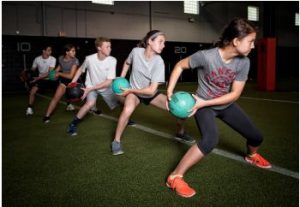 What do strength and training coaches have to do with Australia’s future athletes? Can they rear Olympians and the likes of Tim Cahill, Sally Pearson and Cathy Freeman? Or perhaps, Rugby darling Charlotte Caslick? Armed with their strength and conditioning training insurance Australia policy, some coaches/trainers do take the tough route when training young guns for a life of athleticism and victory. However, many of these trainers know, too, that such a life is never devoid of injuries, challenges and heartaches.
What do strength and training coaches have to do with Australia’s future athletes? Can they rear Olympians and the likes of Tim Cahill, Sally Pearson and Cathy Freeman? Or perhaps, Rugby darling Charlotte Caslick? Armed with their strength and conditioning training insurance Australia policy, some coaches/trainers do take the tough route when training young guns for a life of athleticism and victory. However, many of these trainers know, too, that such a life is never devoid of injuries, challenges and heartaches.
Of Parenting And Coaching
Parents to these promising talents often place too much hope on their kids. Perhaps, some of them are pinning their dreams on their children that they tend to push them harder than everyone else. It is no wonder why training intensity has amplified dramatically over the years. So are overuse injuries and other debilitating circumstances when these kids reach 40 or younger. As a trainer, the challenge is much deeper than everyone else. You need to ensure not just the success of your wards but also their happiness and enjoyment while being injury-free. You need to keep that sacred balance between being a coach and a second parent, which sometimes can pose a lot of challenges.
According to sports medicine experts, it is best to allow kids enjoyment in various athletic prowess. Keeping training intact while letting them find their role in the vast number of sport categories will allow them to find what they truly want to be. As much as possible, start specialising on a particular sports training when these kids are high school sophomores. Apart from strength and conditioning, proper diet, technical skills, and other techniques must be also discussed with the minors’ parents to prepare their bodies for the heavy rigors ahead.
Keeping The Challenge
Trainers, in their efforts to prevent injury, must maintain hawk-eye observation on their wards. In fact, recognizing a young athlete’s breaking point either physically or mentally or even emotionally will help greatly in managing an injury-averse training regimen. Listening with the intent to understand will help open a trusting avenue for trainers and trainees to open their communication line. Fear has no room in such a relationship. Discipline if you must, but when a young trainee comes up with a complaint about pain, take heed as this may mean a strain or overuse injury.
As much as possible, learn to identify the risks and warning signs of mental illness in your ward, too. Even with parental consent and sound Strength & conditioning training insurance Australia policy on hand, providing a healthy training program that allows room for athletes to express themselves can truly help prevent burnout and frustrations. Be reminded that young as they are, these kids may also want to have fun and enjoy life as other usual kids do. Often, athletes’ full recovery rests heavily on their emotional and mental situation parallel with physical recovery.

